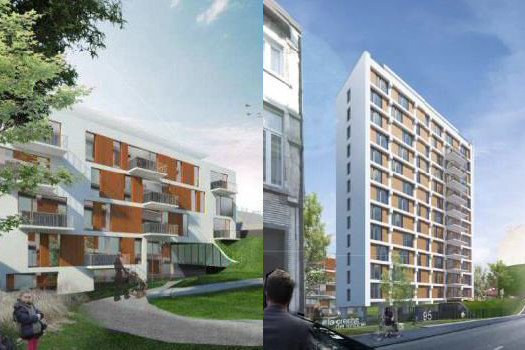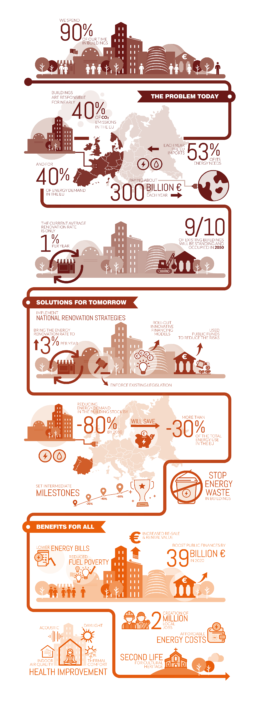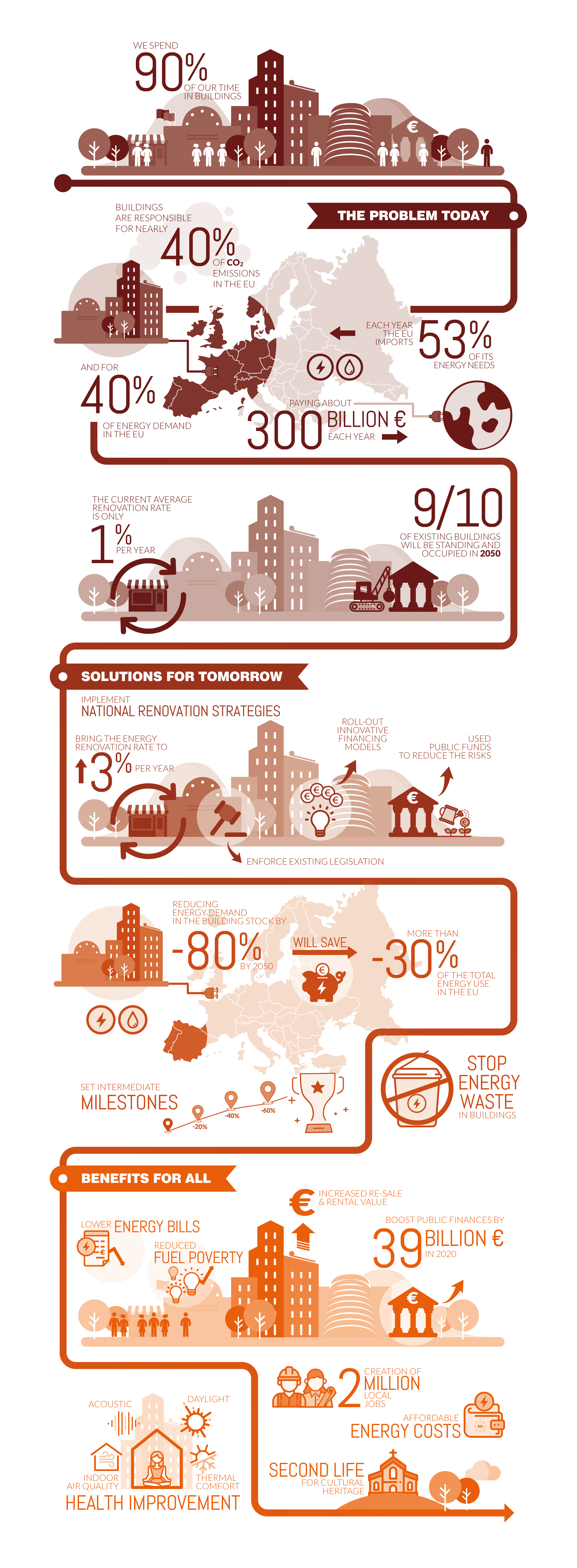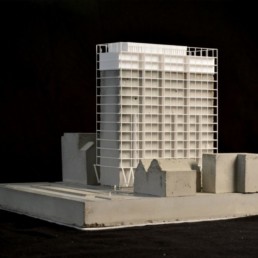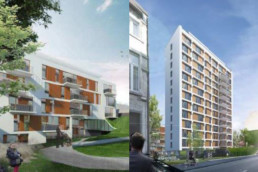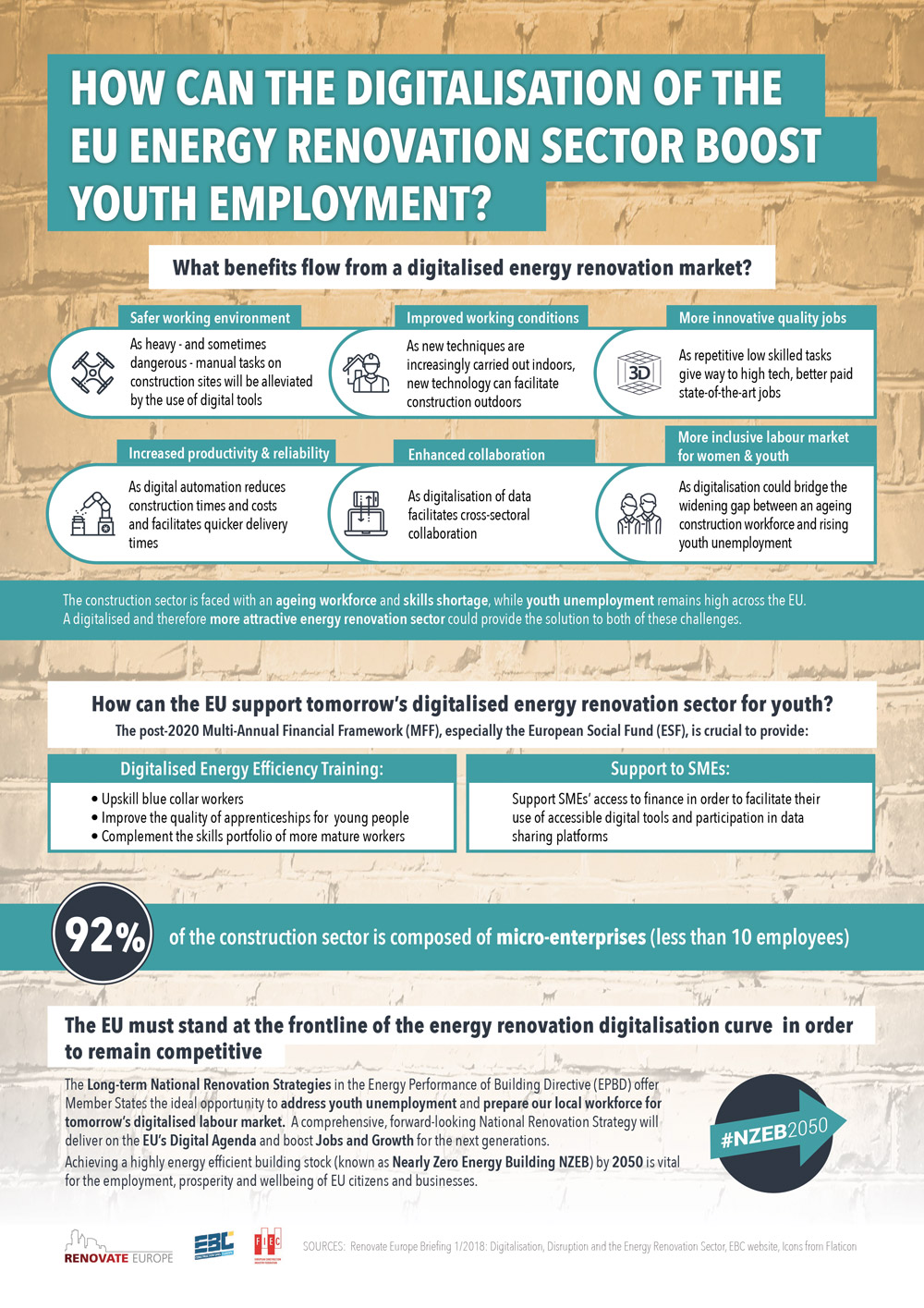Op-ed: Energy renovation is the perfect recovery measure for post-COVID-19
By Adrian Joyce, Director of the Renovate Europe Campaign

As COVID-19 keeps millions of European employees and students at home, and wreaks havoc on our economies, we should already be considering how we can use the EU Green Deal (EGD) to kickstart a rebound in the post-pandemic period.
At Renovate Europe, we see energy renovation as a great means to contain the economic fallout. Millions of public sector buildings are currently empty and may remain so – particularly schools – for the coming 3-6 months. Quick action by policy makers, backed with financial stimulus, to support an immediate launch of a “Renovation Wave” would let people return to better, healthier work/study/recovery environments while helping the EU as a whole ‘flatten the curve’ of energy demand and emissions – and even turn it downwards.
The EGD has established a 2050 ambition to reduce greenhouse gas emissions by 80-95% (compared with 1990 levels) and is considering pushing the 2030 energy efficiency target from 32.5% up to at least 40%. Achieving those ambitions is simply not possible without putting the energy renovation of our buildings first, so the Renovate Europe Campaign says: Let’s get started without delay!
Immediate economic stimulus for small business = a head-start on long-term renovation strategies
In the immediate future, stimulating energy renovation will help keep the EU’s largest industrial sector active: some 16 million people are directly employed in the construction industry and, across the EU, construction accounts for 9% of gross domestic product (GDP). In some Member States, it remains the lifeblood of the economy.
Given that 97% of construction workers are employed by 3 million companies that have fewer than 10 people, a stimulus package for the sector is likely to gain broad public support. Arguably, these are the people – and their families – that are already experiencing deep financial impacts because of projects being put on hold.
Preparing long-term renovation strategies to support the EU efficiency and emissions reduction targets is a requirement in which all Member States are currently engaged. Undoubtedly, many already know where and how to secure quick efficiency gains. A large-scale, rapid-action plan could also be used to “feed” the proposed Open Platform for Renovation, which aims to be a repository of both technical information and best practices.
Capturing the value of public building and school renovations
With a floor space of 6,380 million m2, non-residential buildings make up 25% of the total EU stock, and account for 10-20% of total energy demand, depending on the country.[1] On average, On average, buildings in the services sub-sector (e.g. public and private offices, shops, schools, hospitals) are 60% more energy-intensive than residential buildings (300 kWh/m2 versus 170 kWh/m2).[2] Total buildings energy consumption reached 458 Mtoe in 2016, with the services sub-sector accounting for 150 Mtoe (32%). Notably, demand in the services sub-sector has increased by 23% since 2000, despite a slowdown after the 2008 economic crisis.[3] While there are many types of public buildings within this sub-sector, it is worth noting that schools make up 17% and hospitals account for 7%.

Abating the severity of the economic crisis by rapidly scaling up energy renovation of public buildings offers governments, at both national and municipal levels, the chance to lead by example and to accelerate green strategies to quickly capture savings that are possible only when operating at economies of scale. While at the same time improving quality of life for citizens.
The City of Ljubljana (Slovenia) offers a remarkable example, having recently renovated 48 public buildings (e.g. schools, libraries, cultural institutions, sports centres), of which 23 qualified as deep energy renovations. With efficiency gains of 70-85% (depending on building type), energy savings are 8,245 MW and emissions reduction are 2.96 Mt annually, while the financial savings on avoided energy equal €1m/year.[4] With a total project budget of €14.8 m, the payback period is just 15 years. Project investors included the City, Petrol, the largest Slovenian energy company, and Resalta, a large energy services company (ESCO). Employing more than 100 local contractors, the project also boosted economic development.
Schools are an important renovation target. Energy consumption is typically the second most significant expense – after teacher salaries – among total running costs.[5] In many municipalities, schools account for up to 70% of the thermal energy costs.[6] As aside from energy savings, renovated schools can quickly deliver health and academic achievement benefits. Modelling carried out by the Buildings Performance Institute Europe (BPIE) shows that within the 20°C-32°C range, every 1°C reduction in temperature increases student learning performance by 2.3% while every 100ppm decrease in indoor CO2 concentrations is associated with a decline of 0.1%-1% of absences due to illness. In turn, this improves academic performance by 3%-8% while good daylighting (ergo lower electricity demand) can boost attention spans, concentration and relaxation, increasing academic performance by up to 18%.[7]
Two interesting sources provide excellent information and advice on how the public sector can make schools ‘energy smart’. The first, ‘energy@school’ (a project funded by Interreg Central Europe) includes methodologies to assess energy consumption and prioritise efficiency interventions, an inventory of technologies and ways to cost-effectively bundle measures, and information on developing a business model to work with ESCOs. Build Up (on the European Portal for Energy Efficiency in Buildings) provides multiple examples of specific building renovations and educational programmes.
A down-payment to secure long-term cumulative benefits
Far from being a ‘quick win’, this proposal to jump-start the Renovation Wave must be viewed as a foundational investment: every unit of energy avoided is the start of capturing cumulative value. Investing in energy efficiency does more than underpin economic recovery: it creates healthy and liveable spaces, increases energy security, moves the EU closer to its climate goals and commitments, boosts employment and productivity, and lowers healthcare costs.
Technically, the renovation community knows what to do. One of the biggest barriers is funding, particularly as a survey of financing schemes shows that most are insufficient to support deep energy renovation.[8] Renovate Europe calls on the European Commission to include energy renovation in any post-pandemic recovery strategy.
[1] Energy, Transport and Climate Institute, Joint Research Centre. Towards Nearly Zero Energy Buildings in Europe: A Focus on Retrofit in Non-Residential Buildings” https://ec.europa.eu/jrc/en/publication/ towards-nearly-zero-energy-buildings-europe-focus-retrofit-non-residential-buildings
[2] https://www.odyssee-mure.eu/publications/policy-brief/buildings-energy-efficiency-trends.html
[3] https://www.odyssee-mure.eu/publications/policy-brief/buildings-energy-efficiency-trends.html
[4] https://www.renovate-europe.eu/wp-content/uploads/2020/01/RE100Days_Article-2_Proof-of-what-can-be-done_BRIEF_FINAL_for_website.pdf
[5] http://totalenergyconcepts.com/schoolsmunicipalitiesgovernment/
[6] https://www.interreg-central.eu/Content.Node/ENERGYATSCHOOL.html
[7] Source: BPIE, Building 4 People: Quantifying the benefits of energy renovation investments in schools, offices and hospitals, 2019.
[8] http://bpie.eu/wp-content/uploads/2015/10/EU-B-under-the-mic_executive-summary.pdf
To download the PDF of the Op-ed click here
Building 101

27th March 2020 - 09:30/10:30
Building 101's main aim is to introduce MEPs and Parliamentary Assistants to policy around buildings, renovation and energy efficiency, in order to shape a common understanding on the importance of these topics, particularly in the context of the upcoming legislative actions.
Agenda:
Introduction
Eva Brardinelli - Communications and Events Officer, Renovate Europe Campaign
Presentations
Adrian Joyce - Director, Renovate Europe Campaign
Mariangiola Fabbri - Head of Research, Building Performance Institute Europe (BPIE)
Pau Audi Garcia - Policy Officer, DG ENER (Unit C.3) - Renewables, Research and Innovation, Energy Efficiency - Energy Efficiency: Buildings and Products. European Commission
Q&A Session
Moderated by Eva Brardinelli - Communications and Events Officer, Renovate Europe Campaign
Conclusions
Adrian Joyce - Director, Renovate Europe Campaign
Recording: http://www.renovate-europe.eu/wp-content/uploads/2018/09/Building-101-Recording-1-1.mp4
Click here to access the PowerPoint presentation
REDay2018 – Afternoon site visits
THE COSMOPOLITAN
Transformation of a high-rise office building in the centre of Brussels into mixed-use housing.
More information here.
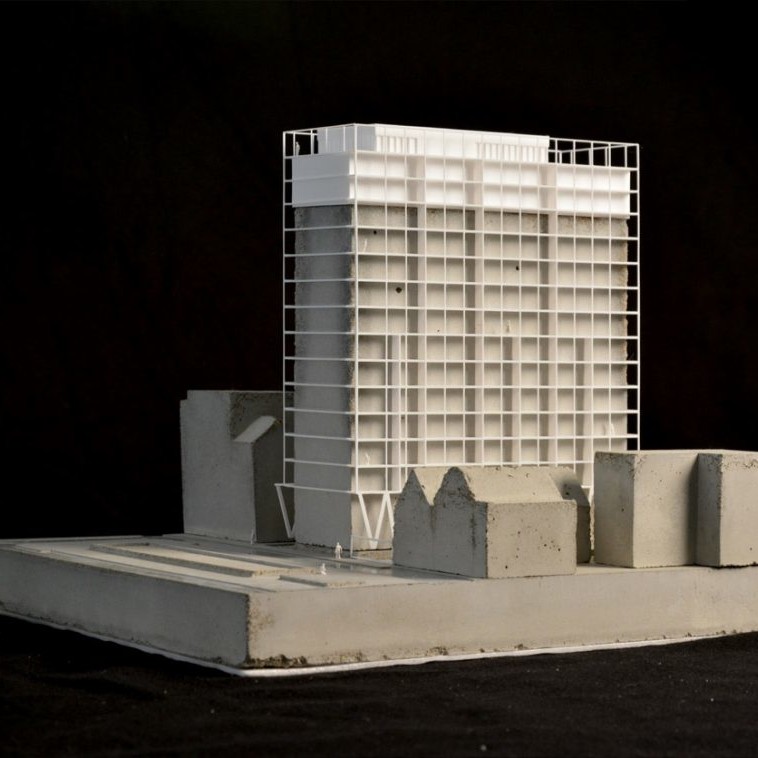
RUE ROYALE 89 [178]
A Building Brought To Life
The objective of this high-performance renovation is to achieve a ‘very low energy’ level and will benefit the Conseil Supérieur de l’Audiovisuel (National Broadcasting Authority).
More information here.
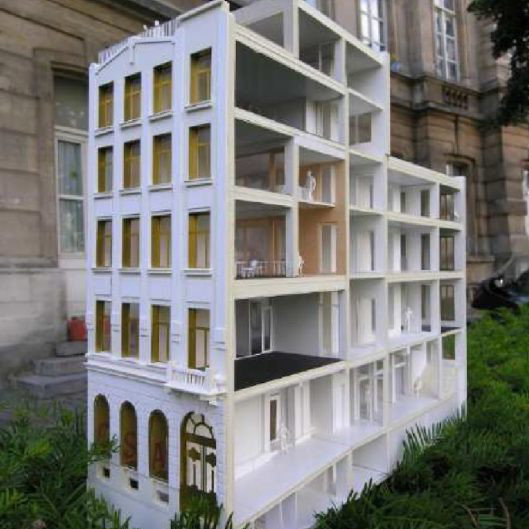
All photos of the visits here
REDay2017 - Afternoon site visits
Visit of Be.exemplary Building “VUB Swimming Pool”
High energy performance retrofitting of the swimming pool of the Vrije Universiteit Brussels with specific attention to sustainability and circular economy. More information here
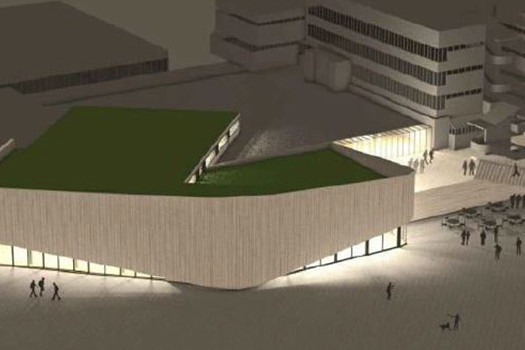
Visit of Exemplary Building Linné
Passive renovation of a residential tower and an annex building to create 50 public housing units, and construction of a crèche for 36 children and a public park between the two buildings. More information here
